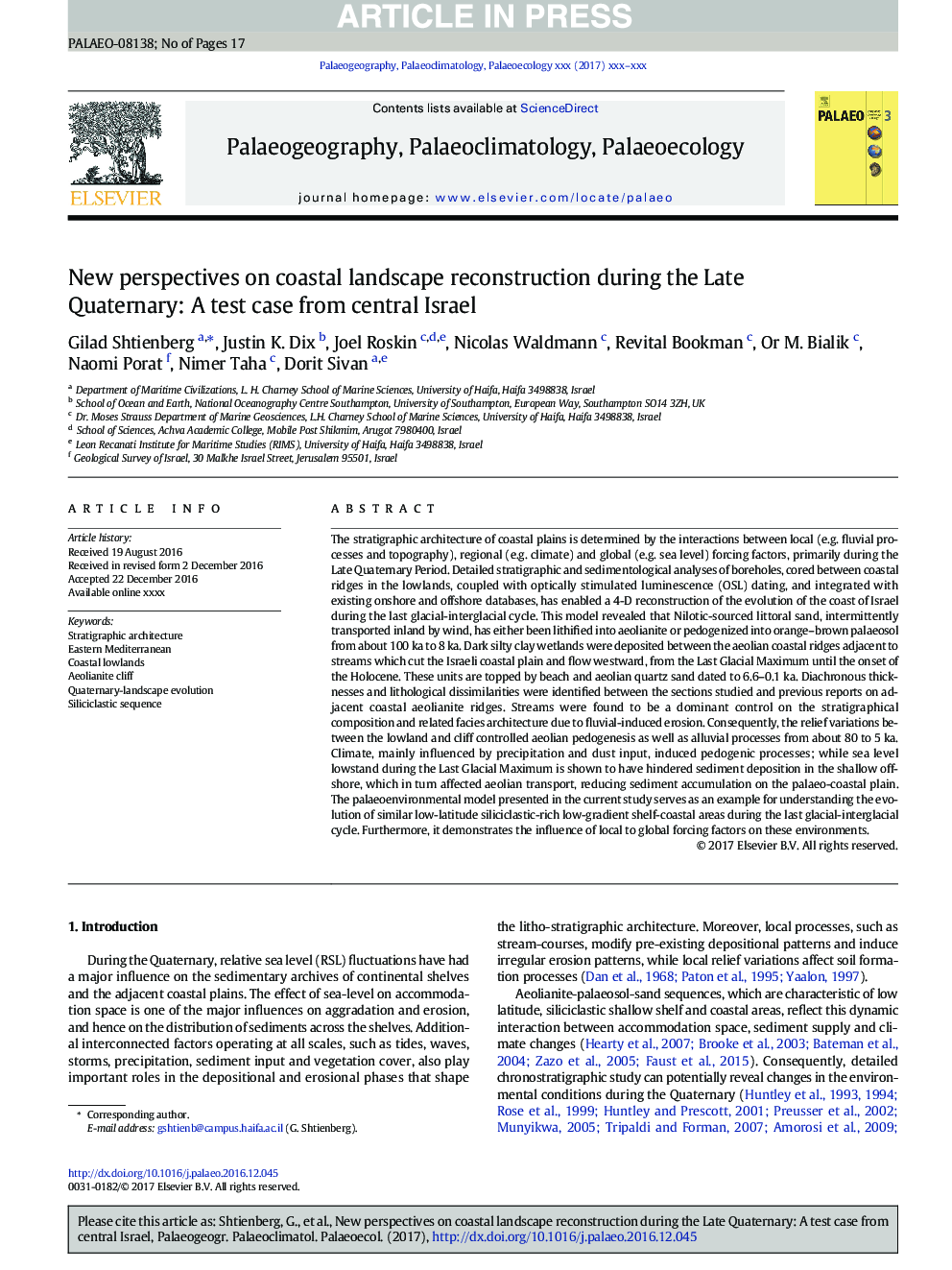| کد مقاله | کد نشریه | سال انتشار | مقاله انگلیسی | نسخه تمام متن |
|---|---|---|---|---|
| 5755791 | 1622124 | 2017 | 17 صفحه PDF | دانلود رایگان |
عنوان انگلیسی مقاله ISI
New perspectives on coastal landscape reconstruction during the Late Quaternary: A test case from central Israel
ترجمه فارسی عنوان
دیدگاه های جدید در زمینه بازسازی چشم انداز ساحلی در دورۀ چهارم نهایی: یک پرونده تست مرکزی اسرائیل
دانلود مقاله + سفارش ترجمه
دانلود مقاله ISI انگلیسی
رایگان برای ایرانیان
موضوعات مرتبط
مهندسی و علوم پایه
علوم زمین و سیارات
فرآیندهای سطح زمین
چکیده انگلیسی
The stratigraphic architecture of coastal plains is determined by the interactions between local (e.g. fluvial processes and topography), regional (e.g. climate) and global (e.g. sea level) forcing factors, primarily during the Late Quaternary Period. Detailed stratigraphic and sedimentological analyses of boreholes, cored between coastal ridges in the lowlands, coupled with optically stimulated luminescence (OSL) dating, and integrated with existing onshore and offshore databases, has enabled a 4-D reconstruction of the evolution of the coast of Israel during the last glacial-interglacial cycle. This model revealed that Nilotic-sourced littoral sand, intermittently transported inland by wind, has either been lithified into aeolianite or pedogenized into orange-brown palaeosol from about 100Â ka to 8Â ka. Dark silty clay wetlands were deposited between the aeolian coastal ridges adjacent to streams which cut the Israeli coastal plain and flow westward, from the Last Glacial Maximum until the onset of the Holocene. These units are topped by beach and aeolian quartz sand dated to 6.6-0.1Â ka. Diachronous thicknesses and lithological dissimilarities were identified between the sections studied and previous reports on adjacent coastal aeolianite ridges. Streams were found to be a dominant control on the stratigraphical composition and related facies architecture due to fluvial-induced erosion. Consequently, the relief variations between the lowland and cliff controlled aeolian pedogenesis as well as alluvial processes from about 80 to 5Â ka. Climate, mainly influenced by precipitation and dust input, induced pedogenic processes; while sea level lowstand during the Last Glacial Maximum is shown to have hindered sediment deposition in the shallow offshore, which in turn affected aeolian transport, reducing sediment accumulation on the palaeo-coastal plain. The palaeoenvironmental model presented in the current study serves as an example for understanding the evolution of similar low-latitude siliciclastic-rich low-gradient shelf-coastal areas during the last glacial-interglacial cycle. Furthermore, it demonstrates the influence of local to global forcing factors on these environments.
ناشر
Database: Elsevier - ScienceDirect (ساینس دایرکت)
Journal: Palaeogeography, Palaeoclimatology, Palaeoecology - Volume 468, 15 February 2017, Pages 503-519
Journal: Palaeogeography, Palaeoclimatology, Palaeoecology - Volume 468, 15 February 2017, Pages 503-519
نویسندگان
Gilad Shtienberg, Justin K. Dix, Joel Roskin, Nicolas Waldmann, Revital Bookman, Or M. Bialik, Naomi Porat, Nimer Taha, Dorit Sivan,
